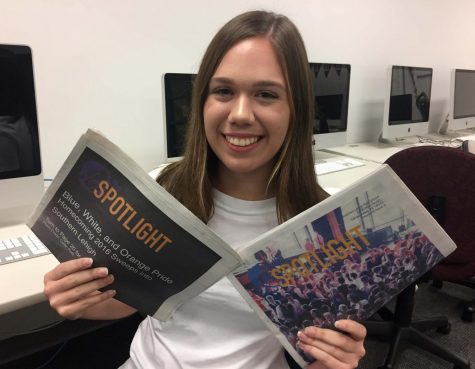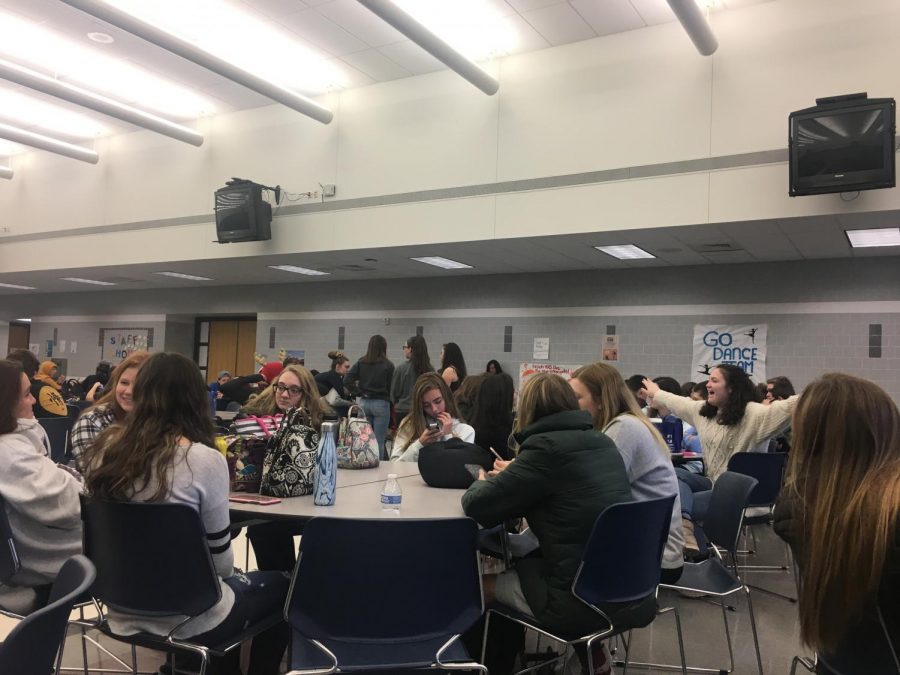Food Committee Stirs Up Conversation
Students eat and converse during their lunch period.
After principal Mrs. Beth Guarriello asked administrators about ways to empower students, assistant principals Mr. Thomas Ruhf and Ms. Jennifer Brinson suggested the creation of a committee to evaluate the cafeteria and propose new ideas and solutions. Over the summer, the Food Committee evolved with the collaboration of Southern Lehigh High School’s administrators.
“It’s not just about food; it’s about the whole environment,” Mr. Ruhf said. “There was not a lot of movement before [Mrs. Guarriello became principal], but this summer, Ms. Brinson and I asked.”
Mr. Ruhf drove the formation of the committee based on his experiences in college. While completing his undergraduate degree, he participated in a committee that focused on meeting with food vendors and reshaping the dining hall. Mr. Ruhf valued his involvement at the collegiate level and wanted to see a similar group at Southern Lehigh High School.
After Mrs. Guarriello sent out a sign up sheet, interested students volunteered their time to help make SLHS lunches better. The first meeting included freshmen Nicole Oviedo and Alexandra Huaman, sophomore Rhea Kalsi, juniors Kennah Salvo, Nina Hamersley, and Gavin DeMars, and seniors Sarah Jacobson and Thomas Hummel.
The District Coordinator of Food Services Mr. Greg Martin, lead cafeteria worker Ms. Melcina Chontofalsky, and the three SLHS building administrators joined this group of students in the boardroom to open up discussion.
“While I’m the Coordinator of Food Services and a representative of the administrative team, as part of the [SLHS] Food Committee, I offer data and information to help students understand the rules and regulations our department must follow regarding the school lunch program,” Mr. Martin said. “I also take suggestions from students and help institute those suggestions, when possible.”
Southern Lehigh is in a unique position. Compared with other schools in the region, students can have more impact in the food options and preparations, because our district does not contract cafeteria employees from another company. The majority of other school districts hire outside companies to prepare food and provide staff. Mr. Ruhf described Southern Lehigh’s setup as more “flexible,” compared to outsourcing.
Southern Lehigh High School is also the only school in the region to offer a Food Committee where students can be involved with making decisions about the cafeteria. At the Lehigh-Northampton principal and vice-principal meetings, which Mrs. Guarriello, Mr. Ruhf, and Ms. Brinson attend every month, they found that no other local schools have created a program like the one in SLHS.
Under this particular group of students and advisers, the SLHS Food Committee has mostly been concerned with health, the environment, and the quality of the food. A number of students proposed ways to limit plastic waste in our community.
“For me, I really wanted to include [ideas] with using less plastic straws,” sophomore Rhea Kalsi said. “We have little to no recycling bins. We are not only trying to make the cafeteria better, but also the rest of the school and the community. One of the ways [our group hopes] to achieve this is by paper straws.”
Aside from making healthy choices for the environment, the Food Committee has also discussed how to make meals healthier for everyone. Currently, there are not many options in the cafeteria for vegetarian, vegan, and gluten-free diets.
“A lot of [food options] are blended together to try to fit [everyone’s needs], but sometimes, there are individual needs,” Kalsi said. “We are trying to make some of the foods more kid-friendly, so that students enjoy their lunches more.”
Another growing trend that was suggested is Meatless Mondays. Founded by Sid Lerner in association with the Johns Hopkins Bloomberg School of Public Health, Meatless Mondays has since encouraged participants to consider their health as well as the environmental impacts of raising livestock.
“[We proposed] healthier lunch alternatives and healthier snacks,” junior Nina Hamersley said. “I know everyone liked the options of wraps, because it’s customizable. I think that [the administration was] very receptive.”
The administration is working hard to make these changes possible. In future meetings, students will be able to propose more ideas, and the school district will report back on the status of previous suggestions. If you are interested in having your voice heard and participating in the next Food Committee meeting, keep an eye on your email inbox for more sign up information.

Senior Bridgette Lang is a third-year staff reporter and former features editor, now serving as opinion and our world editor for the Spotlight. In addition,...


